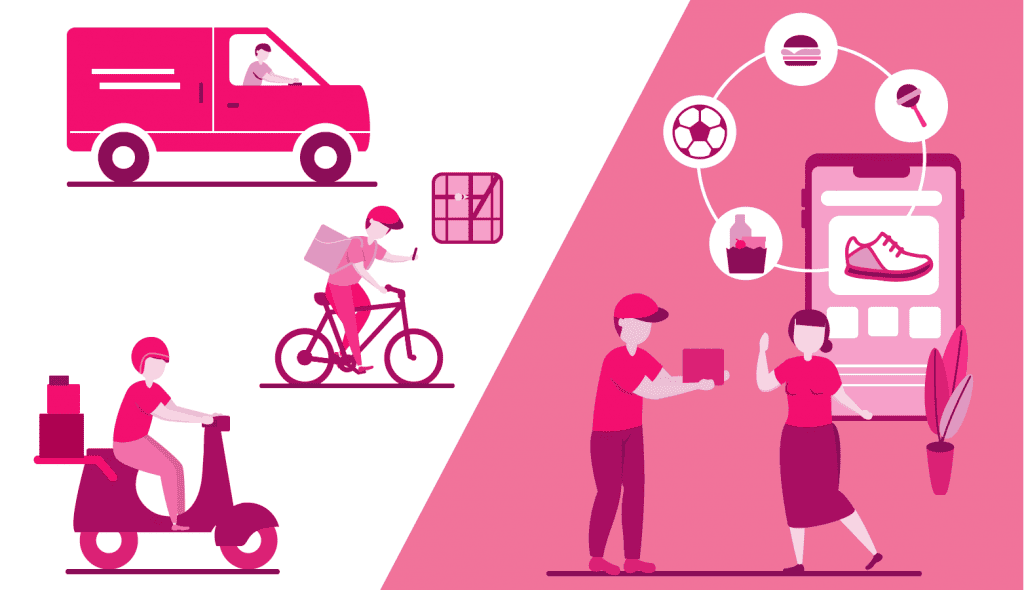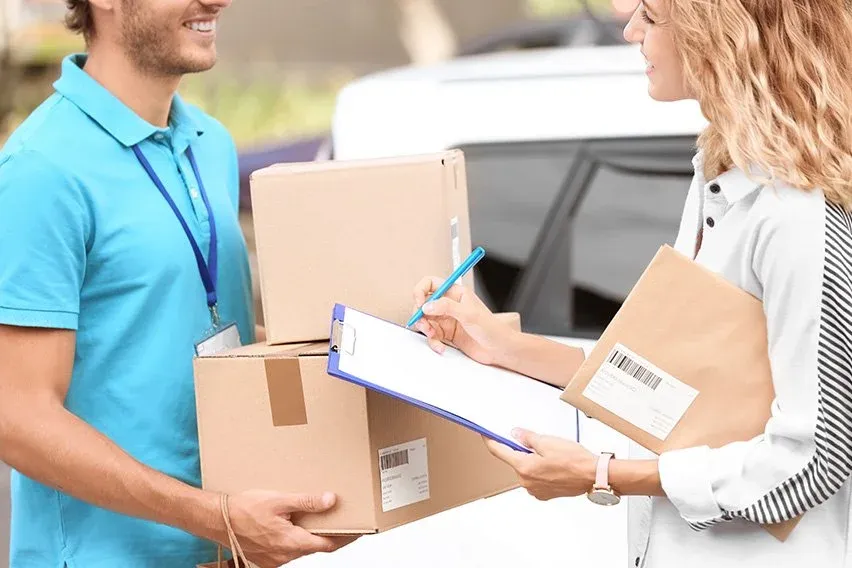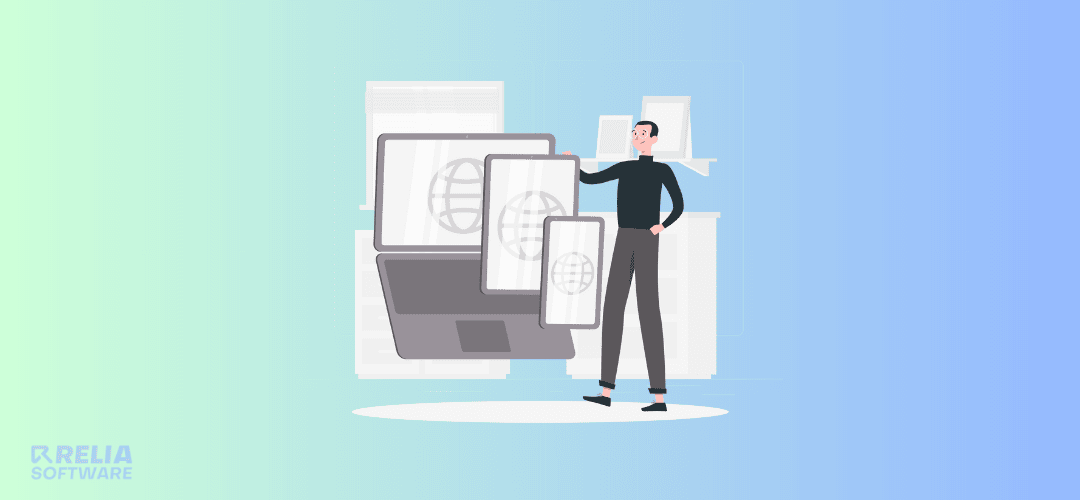Customer expectations are shifting, fastening more and more on speed, cost, and convenience each day. The on-demand delivery request is competitive but essential to give the experience customers are looking for.
Companies like Amazon, Uber, and other B2C companies with delivery as a core element of their operations have become part of our everyday lives.
Deliveries on demand have been set within a timeframe of about an hour by numerous service and product providers, but the end is to further dock this. What's delivery on demand, and what are the downsides and advantages of on-demand delivery services?
>> Read more:
- Top 10 Best Mobile Applications for Logistics Companies
- Basic Things About Logistics App Development
What does On-Demand Delivery Mean?
On-demand delivery is a service that provides guests with goods and services quickly and conveniently. With the adding emphasis on speed, cost, and convenience, on-demand delivery has become a decreasingly important content for businesses and consumers likewise.
Numerous companies, including Amazon, Uber, and Postmates, have come hardwired into our daily lives by offering on-demand delivery services for everything from groceries to eatery reflections to ménage goods.
While there are numerous advantages to on-demand delivery services, there are also some implicit disadvantages, including advanced costs for retailers and an implicit impact on in-store deals.
>> Read more: How Will On-Demand Delivery Services Impact Retail Stores?
Despite these challenges, the on-demand delivery request continues to grow, with arising trends similar to the use of drones and independent vehicles and integration with other technologies similar to AI and IoT.

Advantages and Disadvantages of on-demand delivery
Advantages of on-demand delivery
Increased convenience for customers: On-demand delivery services give clients greater convenience, as they can admit their purchases snappily and without having to leave their homes or services. This is especially important for guests who may have mobility issues or who are unfit to leave their homes for other reasons. With on-demand delivery, they can still have access to the products and services they need without having to leave their homes.
Faster delivery times: With on-demand delivery, guests can admit their purchases within hours or indeed twinkles of placing an order, depending on the provider and position. This is in discrepancy to traditional delivery styles, which may take days or indeed weeks to deliver a product. This brisk delivery time can be especially important for time-sensitive purchases, similar to groceries or medical inventories.
Greater inflexibility for retailers: On-demand delivery services can give retailers lesser inflexibility in terms of force operation and fulfillment, allowing them to respond more snappily to changing client demand. For illustration, a retailer may be suitable to offer a wider range of products if they can calculate on on-demand delivery services to snappily fulfill orders, rather than having to keep large quantities of force in stock.
Competitive advantage: Offering on-demand delivery can give retailers a competitive advantage over other businesses that don't offer this service, helping them attract and retain guests. In the moment's fast-paced world, guests are decreasingly looking for convenience and speed, and businesses that can offer these effects are more likely to succeed.
Increased customer satisfaction: By furnishing fast and accessible delivery options, retailers can increase customer satisfaction and fidelity, leading to reprise business and positive word-of-mouth recommendations. When guests are happy with the service they admit, they're more likely to return for unborn purchases and recommend the business to others. This can help drive growth and success for the retailer over the long term.
Disadvantages of on-demand delivery
Higher costs for retailers: Providing on-demand delivery can be more precious for retailers than traditional delivery styles. This is because on-demand delivery generally requires further coffers, similar to fresh staff and vehicles, to fulfill orders quickly.
Dependence on third-party delivery providers: many retailers calculate on third-party delivery providers to offer on-demand delivery services. This can produce an implicit threat for the retailer, as they may be dependent on the quality and trustability of the third-party provider. However, it could reflect inadequately on the retailer, If the provider gets issues with delivery.
Potential impact on in-store sales: On-demand delivery services could potentially utilize in-store deals, as guests may choose to buy particulars online rather than visiting physical stores. This could have a negative impact on retailers that calculate in-store deals to drive their business.
Regulatory hurdles and legal issues: On-demand delivery services may face nonsupervisory hurdles and legal issues, particularly in areas similar to labor laws and liability. For illustration, there may be questions about whether on-demand delivery motorists are considered workers or independent contractors.
Environmental impact: On-demand delivery services can have a negative impact on the terrain, as they bear fresh vehicles and coffers to fulfill orders snappily. This can contribute to increased business traffic and air pollution in civic areas.
While there are potential disadvantages to on-demand delivery services, numerous retailers feel that the benefits overweigh the costs. By furnishing fast and accessible delivery options, retailers can increase client satisfaction and fidelity, leading to reprise business and positive word-of-mouth recommendations.
Also, on-demand delivery services can give retailers lesser inflexibility in terms of force operation and fulfillment, allowing them to respond more snappily to changing client demand.
The Role of On-demand Delivery in the Market
On-demand delivery has had a significant impact on the request, particularly in the retail and food field. It has converted the way businesses operate, allowing them to offer brisk and more accessible delivery options to customers. This has resulted in increased client satisfaction and fidelity, as well as better deals and profit for businesses.
By furnishing on-demand delivery services, businesses are suitable to meet the growing demand for fast and accessible delivery options. This is particularly important in the moment's fast-paced society, where consumers anticipate admitting their orders snappily and efficiently. On-demand delivery services have helped businesses to meet these prospects, performing with bettered client satisfaction and fidelity.
In addition to perfecting client satisfaction, on-demand delivery has also created new openings for entrepreneurs and small businesses. By furnishing technical or niche delivery services, small businesses are suitable to contend with larger companies in the request. This has helped to promote invention and creativity in the assiduity, performing in a wider range of delivery options for consumers.
Likewise, on-demand delivery has helped to produce new jobs and income openings for individuals who work as delivery motorists or couriers. This has been particularly important during times of profitable query, furnishing individualities with a dependable source of income and helping to support original communities.
Overall, on-demand delivery has become an essential element of ultramodern commerce, furnishing benefits for both businesses and consumers. As the demand for fast and accessible delivery options continues to grow, it's likely that on-demand delivery services will indeed more important in the times to come.

Opportunities and Challenges of on-demand delivery
Opportunities of on-demand delivery
Instacart is a prime example of a company that has mastered the on-demand service model.
By delivering goods right to the client's door, the American enterprise transformed retail assiduity. Partnerships with big merchants such as Whole Foods, Costco, and others aided Instacart's rise.
The focus on omnichannel to overcome the client experience gap has contributed to Instacart's phenomenal success. This is also a major reason why further and further enterprises are concluding an on-demand delivery service model as their primary business strategy.
With an on-demand delivery business model, there are multitudinous chances to ameliorate the customer experience.
Customer Base: When compared to traditional slipup-and-mortar stores, on-demand delivery services enable enterprises to pierce a bigger customer base in both original and transnational regions.
Getting Access to Customer Insights: On-demand delivery services use ultramodern technology similar to Artificial Intelligence (AI) and Machine Learning (ML) to understand your consumers' purchasing habits. As a result, the odds of upselling and cross-selling products ameliorate.
Customer Satisfaction: Despite the events of 2020, further than 57 of the repliers in Merkle's 2021 fidelity Barometer Report claimed they remained pious to a brand. Tech-smart enterprises that use logistic technologies to ameliorate client experience and personalization benefit from a client base that acts as brand ministers.
Customer Loyalty: Despite the events of 2020, further than 57 of the repliers in Merkle's 2021 fidelity Barometer Report claimed they remained pious to a brand. Tech-smart enterprises that use logistic technologies to ameliorate client experience and personalization benefit from a client base that acts as brand ministers.
Reduced reliance on manual labor: The capability to insure short reversal time and speed of delivery are pivotal aspects of an on-demand delivery service conception. This necessitates automating homemade delivery styles. Delivery scheduling, task allocation, route planning, canon operation, and dispatching are exemplifications of these.
Challenges of on-demand delivery
Inventory Management
A report by Statista highlights that 56 global retailers endured moderate dislocation in their force chain in 2020, while 12 faced heavy collapse.
With the global force chain making a brand new launch, it's vital for manufacturers to re-architect a business model towards an on-demand delivery service app to stay around.
Addressing similar challenges in client experience means designing effective, flexible strategies by investing in the use of analytics in the force chain operation system.
Real-Time Visibility
Guests want to see prices for colorful fulfillment options at checkout as well as view order progress in real-time.
Logistic providers bear visibility into contracted lines to ensure that Service Level Agreements (SLA) between shippers and consignees are being met. also, retailers need visibility into not just force, but also how guests are interacting with the brand.
As challenging as it may feel, at this moment, the grainy position of visibility across stakeholders requires dependable integrations between systems as well as effective information sync so that the data is fluently digestible at any point.
Numerous names in-commerce fulfillment have achieved this position of visibility in order to close the client experience gaps. Suppose Amazon, FedEx, and Walmart.
Fitting In
Consumer actions have changed since the epidemic disintegrated across every sector. At the moment, people calculate heavily on new online shopping guests. In fact, 60 - 70% of consumers are shopping in an omnichannel way with social media getting a new form of window shopping, according to a McKinsey exploration.
We also see a focus on value-grounded purchasing, convenience, and vacuity. Where to protect, the quality of products, and the purpose of purchasing have all come from the motorists of consumer decision- timber.
To contend in similar request dynamics, brands can find a better fit for themselves through an on-demand delivery service model.
Automation, All the Way
A leading issue with the on-demand delivery model is that there's a veritably short period between when guests place their orders and when those orders are transferred out.
With over 27 shoppers abandoning their wagons when delivery options aren't presto enough, there's little room for crimes with on-demand delivery.
Similar services work when all processes have been automated to be fully flawless and on time. Working CX challenges in on-demand delivery, along with espousing a mobile-first CX strategy, will be successful with the robotization of logistics.
The Trends in On-Demand Delivery
>> Read more:
- Top 5 Best Supply Chain Management Software
- What is On-Demand Delivery Tracking Management Software?
Contactless delivery: With the ongoing COVID-19 epidemic, contactless delivery has become less popular. This allows guests to admit their orders without any physical contact with the delivery person, reducing the threat of transmission.
Same-day delivery: numerous guests now anticipate same-day delivery for their orders, particularly for groceries and other essential particulars. Businesses are responding to this demand by offering brisk and more effective delivery options.
Subscription-based services: Some businesses are now offering subscription-grounded delivery services, allowing guests to admit regular deliveries of their favorite products. This provides an accessible and dependable way for guests to pierce the products they need on a regular basis.
Delivery drones: While still in the early stages of development, delivery drones have the eventuality to revise the on-demand delivery assiduity. Companies like Amazon and Google are formerly testing drone delivery systems in some areas.
Sustainable delivery options: With growing enterprises about climate change and environmental sustainability, numerous businesses are looking for ways to make their delivery operations more friendly. This includes using electric vehicles, bikes, or other sustainable modes of transportation.
On-demand delivery will continue to evolve and acclimatize to changing client requirements and request conditions. By staying over-to-date with these trends, businesses can place themselves for success in this fleetly growing request.
>> Read more:
- Top 10 Innovative Mobile Applications for Logistics Companies
- No-Code And Low-Code Solutions In Logistics And Supply Chain
Conclusion
On-demand delivery has become essential, with contactless and same-day delivery becoming increasingly popular. Subscription-based services and delivery drones are also emerging trends. Sustainable delivery options are becoming important. Despite challenges, businesses continue to invest in this model for its benefits.
>>> Follow and Contact Relia Software to get more information!
- development

